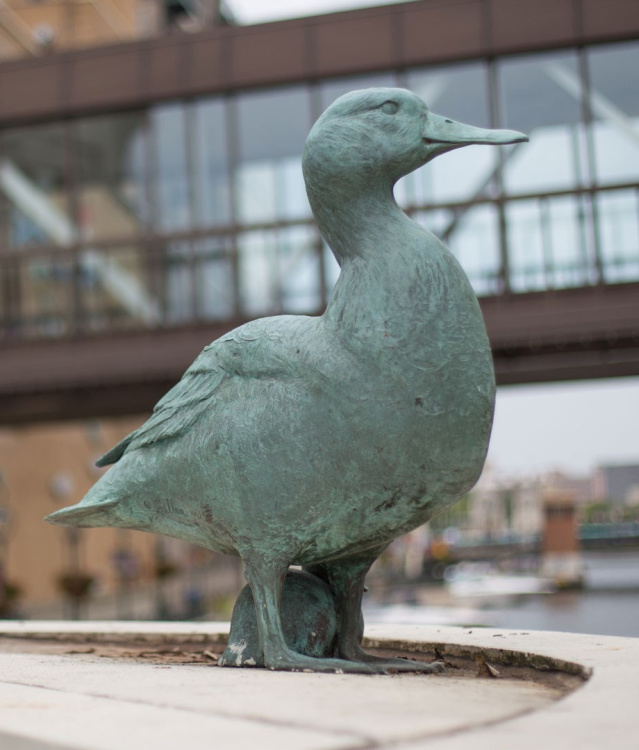Gertie the Duck
By early 1945 America was growing weary under the strain of the devastation and death caused by World War II. In the spring of that year a bridge operator on the Wisconsin Avenue Bridge discovered that a duck had nested on the bridge pilings and was caring for eggs. "Gertie the Duck" became a welcome antidote to the struggles of war and a reminder of the fragility of life.
Inspired by a daily column in the Milwaukee Journal about the incubation and subsequent hatching of the eggs, national newspapers soon became captivated by the story. The nation began to follow the story of Gertie and her ducklings: Black Bill, Dee Dee, Freddie, Millie and Pee Wee. A Gertie Patrol was formed by the Boy Scouts to protect the nest and a Wisconsin Humane Society officer was stationed to watch as the eggs eventually hatched. Their fame earned them a feature in Life Magazine that summer, and even a London newspaper featured their story on its front page. It is estimated that more than two million people came to the city to see the ducklings that spring and summer of 1945. The ducks were eventually cared for in a climate-controlled window display in the adjacent Gimbel's department store, before being released in a park on Lake Michigan.
Gertie's fame turned into legend when a children's book entitled "Gertie the Duck" was written by Nick Georgiady and Louis Romano and published in 1959.
The story of the famous mallard from Milwaukee gave the city and the entire country a reason for hope during a tumultuous time in our history.
Today, you can find Gertie's statue on the Wisconsin Avenue bridge, between Water St. and Plankinton Ave. But Gertie isn't the only duck on the Milwaukee RiverWalk! Try to find the other five feathered friends who have statues along the river.
Explore the RiverWalk!
Stroll along Milwaukee's RiverWalk, where you can enjoy picturesque views of the Milwaukee River, enjoy the vibrant art installations scattered along the pathway or get lost in Milwaukee's riveting history with a city walking tour!






